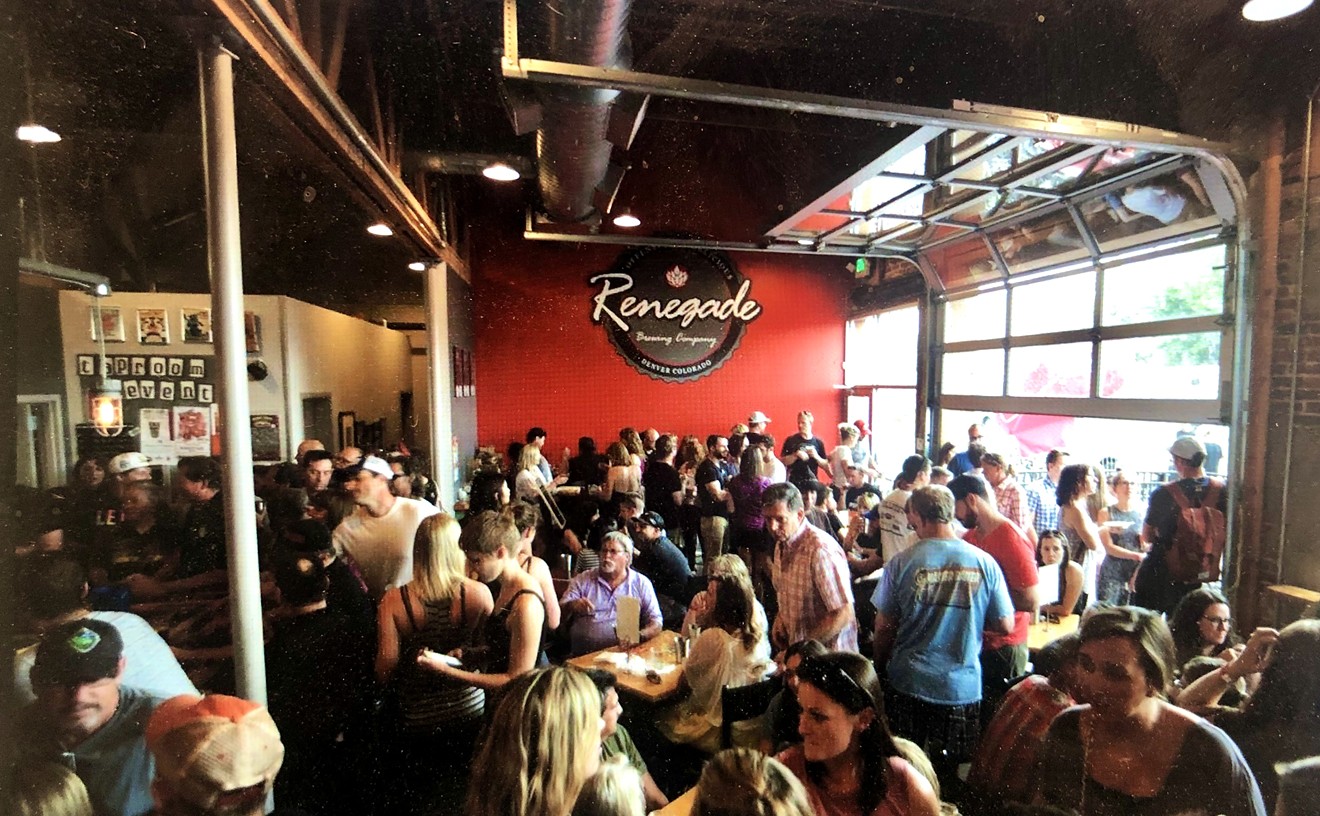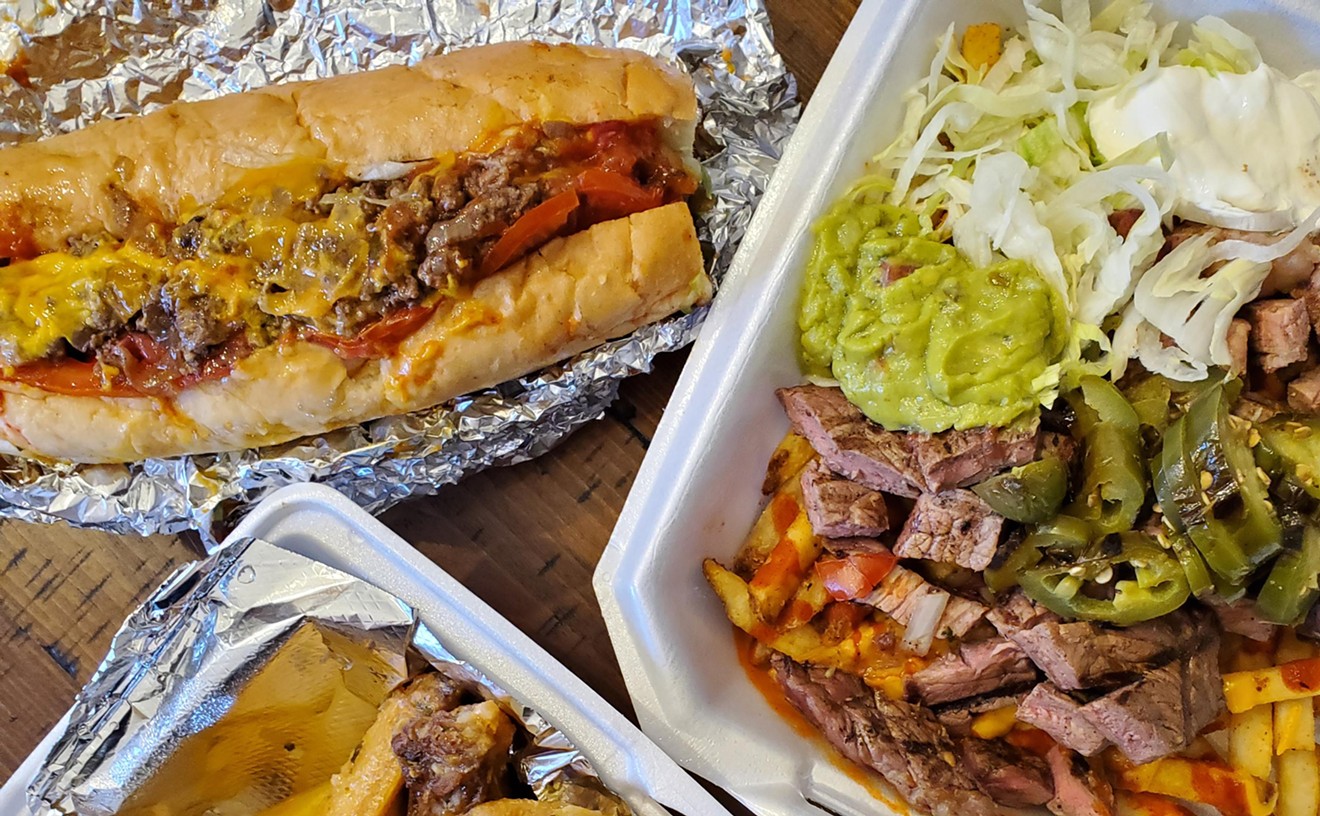In doing so, I've actually found some instances of surprising chain excellence that are the exceptions that prove the rule. Il Fornaio, for example, can do very nice work, largely because the day-to-day ops in these kitchens are overseen by individual chefs rather than some corporate über-chef, and the menus are created in-house, not by corporate edict. P.F. Chang's has service down to a science, with a hierarchical set of checks and balances that could be used as a teaching model for poli-sci majors. And Chipotle -- though now a McDonaldland show pony -- has always been on the cutting edge for all restaurants, not just chains, with its intelligent business practices and the employment of quality product in (nearly) everything it makes.
And now in this morass of Riblets and jalapeño poppers, I've found another oasis of decency: Piatti Locali. This place has done something that, for a chain restaurant, is even more rare than just being good. It has redeemed itself, turning away from the easy enticements of the corporate dark side and becoming a serious restaurant.
So serious, in fact, that it has set a new standard for my judgment of chain restaurants as a whole: Absent everything else on the menu, forgetting what Restaurant X has done in the past and what it might do in the future, would I eat organ meats there? Would I eat them there right now?
The Piatti chain was founded in Napa Valley in 1987 -- in the cradle of the revolution and in a good year for revolutionaries. After that, new locations were slowly added, mostly in California, and all followed a basic plan that called for restaurants with big patios and rustic decor serving simple and unchallenging Italian food in a loosely European iteration of the ideals of California cuisine. There was a lot of grilling, a lot of fresh, plainly prepared vegetables, and a wine list that focused mainly on Italian labels, which in California was something like a sacrilege.
The formula was flexible enough that its allowed Denver's Piatti to do interesting things when it opened in 1995. John Imbergamo, who did PR for the restaurant back in the day, remembers a dinner that brought together local hairdressers to make pasta hairdos -- giant sculptures of twisted linguine and Rastafarian braids hung with orechiette and elbows. Piatti hosted chef reunions, and its own chef and kitchen crew were encouraged to go to the nearby Cherry Creek farmers' market in their whites to buy product for specials.
With time, though, this freedom began to fade. And in the increasingly hot Cherry Creek scene, Piatti was largely forgotten -- and rightly so. Sure, the place was pretty. Like all of its brethen, it had a nice patio, shaded by climbing vines and spreading branches. But while the place did some decent business, the menu seemed dull as dirt to anyone looking for something original. Why should they eat bruschetta, zuppa del giorno, calamari fritti and pizza margherita here when they could have the same thing (or better, more interesting things) done equally well (or better) at some independent restaurant? On the rare occasion that I found myself stranded in the Creek with absolutely no other options, I would go to Piatti. And though I never had a terrible meal, neither did I ever have a great one.
That changed last year. In August 2005, Piatti announced a sudden shift in its business model that would turn all twelve links in the chain into independent restaurants. Not in terms of ownership or systems or accounting, but in the kitchen, which is where it matters most.
At first I wrote this off as a stunt, a clever bit of marketing that would make a chain restaurant appear independent without actually freeing up the kitchen. But then I talked to Susan Klos, manager of Denver's Piatti, and she assured me that this was the real deal. For eighteen months, staffers had been thinking about what they would do if they could do anything at all, and then for three more months, they'd secretly worked to find local producers and purveyors and determine what was really possible. Chefs had been meeting with farmers and haunting the farmers' markets, writing and testing menus based on what was available in their areas. Denver's chef, Mario Godoy, was spotted in Boulder, in the Creek, poking at the greenery and squeezing the melons. He and his crew were inspired, Klos said. They were excited about the opportunity to go their own way, to deal with product purchased from people whose hands they could shake at the end of the day.
The rollout came soon after the announcement, accompanied by a name change. Every Piatti was now a Piatti Locali, in honor of its new, local focus. And the metamorphosis was instantaneous. The Piatti Locali in La Jolla started offering a board heavy with fresh seafoods and shellfish, while the restaurant in Danville, California, featured a greenmarket menu with butternut squash ravioli and kabocha pumpkin risotto. Here in Denver, Godoy was working with Torpedo Farms pork, Haystack Mountain cheese and Hazel Dell mushrooms. He was making his own fettuccine, his own gnocchi, using every trick he'd learned in the kitchen where he'd been since Piatti first opened to create a menu that showcased not just Colorado, but Colorado season by season and farm by farm. And suddenly, Piatti became the place I looked to first when I had Italian on my mind.
Which brings me back to those organ meats. Would you eat beef hearts at an Olive Garden? How about Applebee's Brainlets? Would you run right out to pick up a box of the new McDonald's McPancreas Nuggets?
Of course not. But against all odds, I now find myself looking forward to Piatti's sweetbreads. The thymus and pancreas of veal calves (glands located high in the throat and close to the heart) are cleaned, boiled and lightly breaded in the classical style, then fried. And while these may not be the absolute best sweetbreads I've ever had, they're good enough. I can sit at the bar and ask the kitchen to prepare me a plate -- the tender morsels served in a silky and butter-heavy reduced veal stock, plated with perfectly pan-fried discs of Jerusalem artichokes, seared slabs of portabello mushroom and parmesan cheese -- and forget for a moment that I'm in a chain restaurant at all.
In Piatti's dining room and from the good seats at the service end of the bar, you can see the crew working. This restaurant has not just an open kitchen, but a wide-open kitchen -- the entire galley (less prep areas and dish room) is on view, with just a short, tiled retaining wall separating it from the floor. Anyone who cares to can look right in and see the wood burning in the pizza oven all the way at the back, can see the cooks chopping, assembling plates, wiping down their boards and tending to the battle-scarred batterie de cuisine -- proof enough that this is now a kitchen working for itself. There are always five or six big, heavy, eighty-quart stock pots on the stove, scorched black at the bottoms, their flanks dinged with hundreds of tiny dents from the constant shuffling of pots around the burners. This is where the sauces are kept -- not in a steam table, not in a plastic bag in the cooler. There's an impressive mise at each station, oils in speed-pourers lined up along the stainless, and fifty well-seasoned sauté pans stacked on the shelf above the stoves.
Why does a galley keep fifty sauté pans on hand? Because it needs them. When you're serving ready-made or pre-pack or steam-table cuisine, what you need is a lot of ladles and no conscience. When you're actually cooking for a living, you need fifty sauté pans. You need eighty quarts of homemade red sauce simmering on the stove. You need a speed rack and a full hotel pan of garnishes on ice.
For lunch at Piatti last week, I had a simple ravioli elevated by a balanced filling of ricotta and fresh spinach; for dinner, a plate of pappardelle in a weird but workable Spanish-French fusion of shrimp and saffron, wilted arugula and tomatoes, all in a beurre blanc punctuated by chile flakes and garlic. The service here is exemplary -- no breathless fawning over the brilliance of my choices, no insistence that every single thing on the menu is fabulous. With a waiter's help, I bypassed the plain spaghetti bolognese and ordered cavatappi with radicchio, strong collard greens, sweet sun-dried tomatoes and shredded pork in gorgonzola cream that was unlike any pasta in recent memory, combining several powerful, combative and rarely conjoined flavors in a single dish that made good use of all of them, melding and blending all the sturdy greens and sweetness and pork and sour gorgonzola into something burly and rustic, yet delicate at the same time.
I've had skilled servers, excited by what's on the menu that day, bring me a simple plate of naturally fed salmon dressed in nothing more than shallots, capers, white wine and butter; stiff, grilled triangles of polenta covered in veal demi and roasted wild mushrooms; and Red Bird chicken breasts layered with prosciutto and fontina cheese, served over the best polenta I've had anywhere and swimming in a composed white sauce so rich with butter and cream and cheese that it was rivaled only by the one done at Cafe Jordano -- the area's ultimate mom-and-pop Italian operation. And even the gnocchi (a pasta that's consistently screwed up all to hell by nearly any Denver galley that attempts it) has been impressive, with each of the little potato-and-ricotta balls hand-rolled, beautifully presented on an oversized plate and smothered in an arrabbiata sauce with Palizzi Farms fresh spring peas and diced bits of speck.
There are not many (if any) other chain restaurants importing Calabrian chiles for a mussel appetizer -- then presenting the shellfish simply in a fragrant broth of white wine, garlic, parsley, chiles and lemon juice -- or for a dish of Italian greens or a contorni of cappellini and sardines. And few Colorado restaurants, much less a Colorado outlet of a chain, would combine perfectly frenched Colorado lamb chops, stewed Palizzi Farms cherries and Haystack Mountain goat cheese in a luxuriantly oily, demi-shot pan sauce with a single roasted Yukon Gold potato. This plate alone -- and it was a fantastic plate -- said more about the power of locality and seasonality than a hundred press releases, speaking eloquently of a kitchen totally revitalized by the freedom to go its own way.
That's a lesson other chain restaurants could stand to learn, the kind of thing that could bring a lot of places back from the brink. Maybe one of these days I'll get my wish and see every Olive Garden replaced with a restaurant as good as Piatti.
Then I'll be able to eat sweetbreads whenever I want. And wherever I want.










